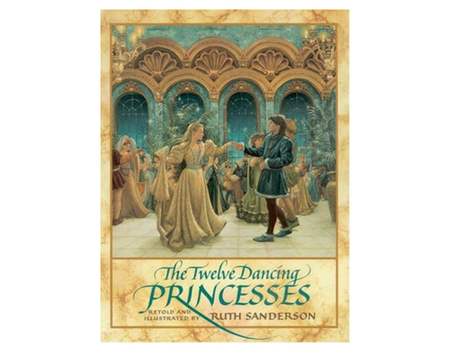
He may be right, but I'm not convinced.) Otherwise, Ms Sanderson doesn't miss a trick.A BEAUTIFUL RETELLING OF THE CLASSIC BROTHERS GRIMM TALE WITH LAVISH FULL-COLOR OIL PAINTINGS. He thinks that in this fantasy world, the shoes fall apart structurally even if they don't degrade mechanically. (My husband doesn't agree with me, by the way. Hence the term for a poor person - 'down at heel'.

But surely the important sign of a worn-out shoe is that the heels are worn (and the toes are scuffed). Now, I know that this is fantasy, so anything can happen. But the shoes are represented as having become unstitched from their soles: gaping open at the toe and beyond. We see these worn-out shoes, as motifs, on page after page.

Also - and this is a quibble but as an artist I think it's worth mentioning - the dancing shoes are supposed to be worn out. The only time that I thought this failed to happen was when the princess is telling the Lad her real thoughts, and she looks as if she's reaching out for a beloved dog or child rather than crying out to intervene.

Everyone is given real expressiveness, genuinely expressing what we can imagine, as told by the text, are their thoughts. The people in this book are represented as individuals, but not overly so: I actually prefer slightly idealized faces in fairytales (think, for instances, of the faces in Arthur Rackham's work). What can you say about the illustrations, having gawped at them happily, page after page? I did have doubts, at first, about the half-short half-long hairdo of the Lad in this story (his name is Michael): the look of a 70s boyband idol? But I got over that. The story is beautifully, flowingly, evocatively told. In this case, despite the exquisite oil paintings by the author, the writing must also be given its due. It's tempting, when praising a fairytale book, to rave about the painting but ignore the writing.


 0 kommentar(er)
0 kommentar(er)
